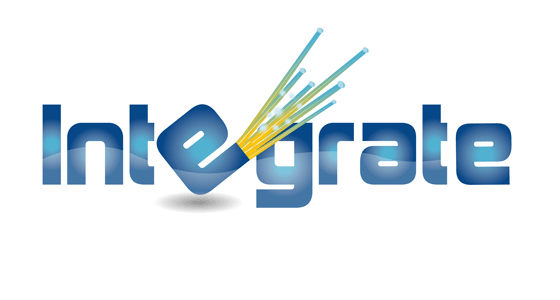Similar to other PoS blockchains, Aleph Zero validators stake AZERO for a chance to validate transactions and add them to the blockchain. Aleph Zero seeks to solve the speed, scalability, validation time, and security issues that current blockchains face. The blockchain also uses a novel, peer-reviewed Directed Acyclic Graph (DAG) consensus protocol.
How do you feel about AZERO today?
Unlike other projects built on existing blockchains, Aleph Zero has created its own blockchain with unique features. For instance, it merges the Proof-of-Stake consensus mechanism with Directed Acyclic Graph (DAG). The project is building a privacy-focused layer-2 platform called Liminal.
How to purchase the AZERO coin
Learn more about how crypto prices are calculated on CoinGecko. DAGs are generally used in computer science but have made their way into the blockchain space. Blockchain networks are using them to boost transaction throughput and lower transaction fees. The Aleph Zero blockchain’s native currency, dubbed AZERO, is currently listed on following exchanges, with more to be added in the future. Yes, the Aleph Zero application on Ledger supports nomination pools. Note that Aleph Zero is not yet available in Ledger Live and nomination pools should be used through azero.dev or one of the supported wallets.
Aleph Zero Price Chart (AZERO)
Bitcoin, for instance, prioritized security and decentralization, but faced scalability limitations, processing typically fewer than 10 transactions per second due to its 4 MB block size and 10-minute block interval. On the other hand, Ethereum, in its transition to why you should use a litecoin mining calculator Proof-of-Stake (PoS), sacrificed some degree of decentralization in favor of scalability. The price of Aleph Zero (AZERO) is calculated in real-time by aggregating the latest data across 12 exchanges and 14 markets, using a global volume-weighted average formula.
Aleph Zero’s versatility is highlighted by over 40 use cases being actively developed, showcasing its adaptability across various sectors and applications. Aleph Zero is a Layer 1 Blockchain, aiming to thrive where giants like Bitcoin and Ethereum have failed. By optimizing decentralization, scalability, and security, Aleph Zero could be the next big thing, backed by leading VCs including your favorite cryptocurrency exchange Gate.io. Currently, AZERO’s supply stands at 343.72M, with an initial circulation of 160,000,000 AZERO.
Simply put, if a user’s overall collateralized position is deemed to be less volatile, then the user may be allowed to have a higher loan-to-value ratio. Aleph Zero seeks to ensure compatibility across various blockchain networks. Although Aleph Zero doesn’t operate as a parachain, it has strategically acquired a parachain slot. The primary goal is to construct a cross-chain bridge to Polkadot. This integration will enable seamless communication and data between Aleph Zero and other prominent networks such as Polkadot, Cosmos, and Ethereum, expanding the reach and utility of the platform.
Conversely, disincentivizing rules discourage validators from malicious actions against the network. Aleph Zero has adopted a manual slashing mechanism until the decentralized governance system is up and running. The new minimum bond for staking via a direct nomination is 2,000 AZERO.
- Antoni Żółciak brings over a decade of valuable experience in technology marketing.
- They can request their payouts after the completion of one full era.
- This makes it more difficult for malicious nodes to collude and disrupt the network.
- Aleph Zero’s founding team comprises innovative minds, including Adam Gągol, Michał Świętek, Antoni Żółciak, and Matthew Niemerg.
Funding rounds have played a crucial role in Aleph Zero’s journey, starting with a pre-seed round in 2018 where tokens were issued at $0.04 each, following a Simple Agreement for Future Tokens (SAFT) model. This round saw 16.667% of the coins distributed, with half becoming available at the Token Generation Event (TGE) and the remainder vested over 15 months. AZERO is used to pay for transaction fees on the Aleph Zero network. These fees compensate validators for processing transactions and securing the network, ensuring efficient operation and scalability. Aleph Zero is privacy-enhancing layer 1 blockchain, engineered for speed, achieving efficiencies akin to conventional web2 systems. It upholds rigorous standards for data privacy and transaction security, while aiming for genuine decentralization over time.
For a more detailed description, you can read our blog post about DAG vs blockchain. Aleph Zero is a permissionless Layer-1 blockchain with a Proof-of-Stake (PoS) consensus mechanism. Even after times of asynchronicity, the network stays secure and is able to continue verifying transactions, as it can order blocks in the correct order as soon as it is back to normal operation. The Aleph Zero ecosystem is underpinned by its native AZERO coin, which plays a crucial role in network security through staking, transaction fee payments, and governance. The coin’s utility extends across various functionalities within the Aleph Zero platform, including decentralised exchange fees and collateral for wrapped assets.
Aleph Zero is a promising blockchain that could give existing layer-1 blockchains a run for their money. Its ability to deliver a high transaction throughput might make https://cryptolisting.org/ it an ideal enterprise-grade blockchain, able to support private transactions and smart contracts. Of course, Aleph Zero is still in its nascent stages of development.
Aleph Zero also uses asynchronous operations to improve its security. This means that nodes can operate independently and do not need to wait for each other to respond before confirming a transaction. In line with the Trust Project guidelines, the educational content on this website is offered in good faith and for general information purposes only. BeInCrypto prioritizes providing high-quality information, taking the time to research and create informative content for readers.

About The Author: Adrian
More posts by adrian